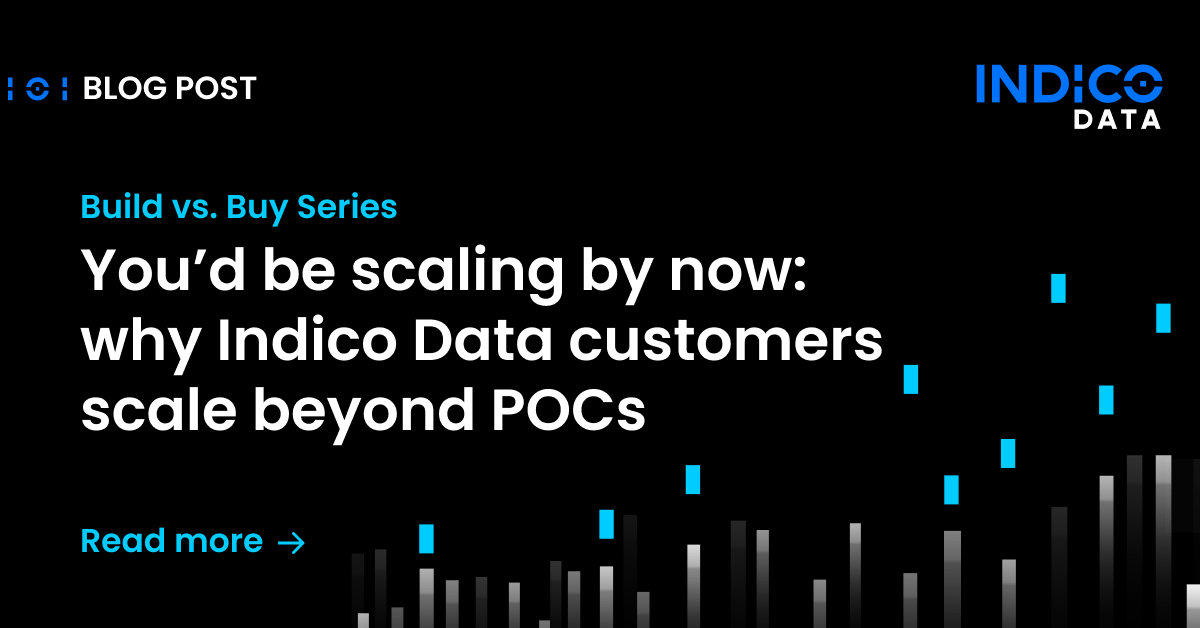The insurance industry finds itself at a critical juncture. As 35% of underwriting staff are set to retire within the next five years, insurers are turning to artificial intelligence to maintain and expand their underwriting capacity. In a recent webinar titled “From Expertise to AI: Bridging the Knowledge Gap in Insurance Underwriting,” experts from Indico Data, Swiss InsurTech Hub, and Microsoft discussed how insurers are navigating these challenges.
Watch the full webinar: From expertise to AI: bridging the knowledge gap in insurance underwriting
The looming issue of insurance staff growth
The webinar featured Tom Wilde, CEO of Indico Data; Silvia Signoretti, President of Swiss InsurTech Hub; and Naveen Dhar, Senior Director of Insurance Worldwide at Microsoft. Wilde kicked off the discussion by highlighting the dual pressures faced by the insurance industry: the need to grow staff while managing the impending retirement wave. He noted that “71% of property casualty insurers expect to increase their staff in the next 12 months,” which is great—but also that over the next 15 years, “the Chamber of Commerce estimates that 50% of the insurance workforce will be at retirement age.” Where will insurance companies find their new staff?
Addressing talent acquisition and knowledge transfer
Silvia Signoretti emphasized the longstanding challenge of talent acquisition in insurance, particularly in the Swiss market. She explained, “Companies have been looking at process automation. There’s an opportunity to really create efficiency… But probably, we haven’t seen enough of those, let’s say super dramatic changes in the industry.” She pointed out that while the industry offers diverse career opportunities, it struggles to attract new talent due to a lack of compelling stories about the potential of insurance careers.
Naveen Dhar expanded on the apprenticeship model in underwriting, stating, “The insurance companies are looking to see how they can effectively use technology to help with the risk and [complete tasks] to help the underwriter.” He highlighted the importance of technology in aiding underwriters, not replacing them, and the need for productivity gains through tools like Chat GPT and custom copilots. We at Indico couldn’t agree more, and our outlook on AI as a tool and not a human replacement is virtually the same as Dhar’s.
Related content: The future of Intelligent Document Processing: trends and predictions
Leveraging AI for efficiency
The panel discussed how AI can address the talent gap by enhancing the productivity of existing teams. Wilde noted, “AI can augment the work that carriers do and alleviate some of this stress by extending the capabilities of the team they have, making companies more efficient and in the process perhaps [reducing] overall expense ratios and [improving] loss ratios.”
Whereas companies and clients have traditionally needed to send documents back and forth between parties multiple times due to gaps in information, now, AI can read documents, extract and summarize data for the underwriter, and populate forms incredibly quickly. A single underwriter may now be able to do the work of many, in some cases.
Overcoming challenges with AI implementation
The discussion also touched on the complexities of implementing AI in underwriting processes. Wilde remarked, “When we would sit down with a team of underwriters and ask them to explain how underwriting decisions get made… there was kind of a fairly wide range of how each underwriter in a specific insurer thought about the problem and how they could define the problem.” This variability underscores the need for standardized processes and training to effectively integrate AI into workflows without interfering too much with an individual underwriter’s way of doing things.
Signoretti added that a comprehensive approach is necessary, combining technical skills with data skills to close the knowledge gap. Companies must invest in serious process analysis before beginning to incorporate AI into any of their data analysis processes. Without fully understanding their own inner workings, companies are often found at a loss when it comes to training AI models.
Related content: How AI enhances precision, speed, and efficiency in insurance underwriting
Ensuring security and scalability
The panel also addressed the importance of secure and scalable AI implementations. Dhar emphasized the need for traceability and auditability, stating, “As long as you can document and trace your decision, then you’re going to be okay.” He stressed that while AI can enhance decision-making processes, it is crucial to maintain transparency and ensure that AI models are well-governed.
Future outlook
Looking ahead, the experts agreed that the insurance industry must focus on clearly defining successful outcomes and ROI when implementing AI. Wilde concluded that AI should be used to achieve specific outcomes, not just for the sake of using it. It’s imperative to define what success looks like for your individual company, or even more granularly for a single process.
In summary, the webinar provided valuable insights into how AI can help bridge the knowledge gap in insurance underwriting. By leveraging AI to enhance productivity, ensuring secure and scalable implementations, and focusing on clear outcomes, insurers can navigate the challenges of a retiring workforce and continue to grow their businesses. Thanks for reading, and you can view the entire webinar here.
Subscribe to our LinkedIn newsletter.
Frequently asked questions
- What specific AI tools and technologies are currently being used by insurance companies to enhance underwriting processes? Insurance companies are leveraging a range of AI tools and technologies to enhance underwriting processes. These include natural language processing (NLP) to read and understand complex documents, machine learning algorithms to predict risk and optimize decision-making, and robotic process automation (RPA) to handle repetitive tasks. Companies like Indico Data provide AI solutions that can automate data extraction and analysis, reducing the time underwriters spend on manual tasks. Additionally, tools like ChatGPT and custom-built AI copilots assist underwriters by summarizing large volumes of information and offering insights, thereby increasing their productivity and accuracy.
- How are insurance companies ensuring that AI models are being trained with accurate and unbiased data? Insurance companies are taking several measures to ensure that their AI models are trained with accurate and unbiased data. They start with comprehensive data audits to identify and correct any biases in the data sets. This process involves scrutinizing historical data to ensure it reflects a wide range of scenarios and outcomes, which helps in creating balanced training sets. Companies also implement ongoing monitoring and validation processes to continually assess the performance of AI models, making adjustments as necessary to mitigate bias. Collaboration with data scientists and domain experts is crucial to refine algorithms and ensure they are aligned with industry standards and ethical guidelines. Additionally, insurers may use external data sources to complement their internal data, thereby reducing the risk of bias from a single data source.
- What are the potential risks or downsides of relying heavily on AI in insurance underwriting, and how are these being mitigated?Relying heavily on AI in insurance underwriting comes with several risks, including model inaccuracies, data privacy concerns, and the potential for reduced human oversight. To mitigate these risks, insurance companies implement rigorous testing and validation protocols to ensure AI models are accurate and reliable. They also prioritize transparency by documenting AI decision-making processes and maintaining audit trails, which helps in tracking and verifying decisions. Data privacy is safeguarded through robust encryption and access control measures, ensuring sensitive information is protected. Moreover, companies adopt a hybrid approach where AI complements human expertise rather than replacing it entirely. Underwriters are trained to work alongside AI tools, using their judgment to validate AI-driven insights and decisions. This balanced approach helps in mitigating the risks while harnessing the benefits of AI in underwriting.


